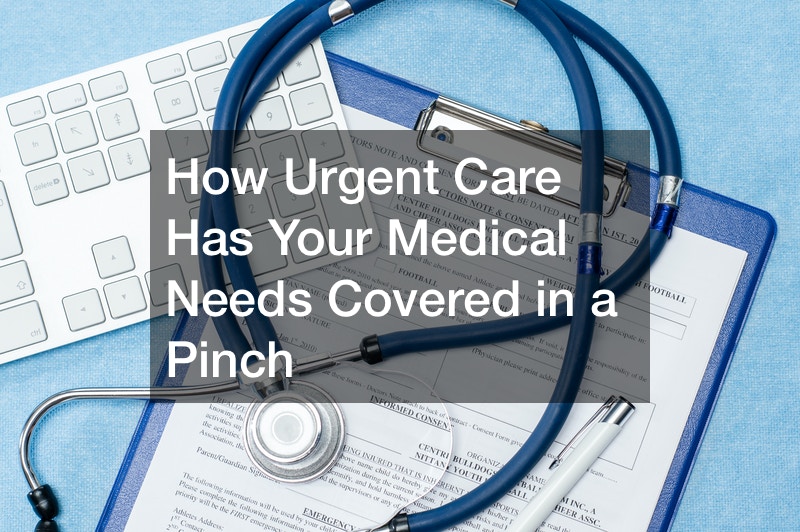
Sometimes you need medical care, and you can’t get into your doctor’s office. Or you might not have a regular doctor. In this case, you might end up in the emergency room for treatment. But if your symptoms aren’t life-threatening, you might be able to avoid the cost and time it takes to go to the hospital. An urgent care clinic can treat many minor illnesses and injuries, keeping hospital. Urgent care clinics are available in many communities, but they all have different rules and procedures. So before you go to the urgent care, first see is the urgent care open today. Unlike the hospital, they aren’t open all the time. You’ll also need to know what kinds of insurance they take and if they can treat the problem that you have.
If it’s an emergency and you can’t check those things, then you need to know how far is the nearest hospital and go there. The hospital emergency phone number will help you get where you need to go. But if you can go to urgent care Point Ruston or other locations, it can save you money and frustration.
If you need timely primary medical care, but can’t get it because you’re on vacation, your doctor is away or it’s after hours, or you don’t have a primary care doctor, you may be in a panic. What do you do? Where can you go? There’s an easy answer: find an urgent care clinic near you and head over. Urgent care can treat a number of medical conditions, and in some cases, can prescribe antibiotics, administer flu shots, and do physicals for sports or trips abroad. Though most urgent cares can treat certain things — like the flu, strep throat, stomach pain, etc., — every urgent care center differs a little in some other areas of treatment. Your best bet is to check ahead and see what the one in your area offers in terms of services and hours.
There are over 9,000 walk-in urgent care centers present in the United States today that are stand-alone, and between 50-100 new clinics pop up every year. Around 20,000 physicians staff these urgent care centers and that number is steadily increasing. These professionals have developed the field of urgent care medicine into an important specialty. Indeed, a physician or group of physicians own about half of urgent care centers.
In 2011, the average urgent care center saw almost 350 patients per week (per the Urgent Care Association of America) and saw almost 30 additional patients per month.
Generally, there are about seven exam/treatment rooms per each urgent care and most urgent care physicians have a 4.5 patients per hour ratio, says the American Academy of Urgent Care Medicine. Obviously, this number fluctuates, based on the severity or acuity of the symptoms or conditions shown.
A recent report also states that the average reimbursement for an urgent care visit is a little over $100 per patient, versus a little over $300 per patient (on average), compared to the emergency room — which makes sense, given that the cost of treatment is much lower. Compare a $200 urgent care bill with a $2,000 emergency room bill and apply that $100 versus $300 to that — urgent care is far more cost-effective.

Why Go to Urgent Care Instead of the Emergency Room?
You’ll note the difference between “urgent” and “emergency.” With urgent care, you obviously need timely primary medical care, but it’s not a life-threatening emergency. By noting the difference, you can help avoid overcrowding in emergency rooms.
You’re also more likely to receive faster care at urgent care. Due to aforementioned overcrowding, if your condition is not life-threatening, it’s likely that you’ll be waiting awhile at the emergency room. Around 60% of all urgent care centers boast a wait time of under 15 minutes before patients see a physician (or mid-level provider) and 65% of urgent care centers have a physician on the premises at all times.
Furthermore, your overall costs will be much lower. If you went to the emergency room for a case that could have been treated at urgent care, the average cost is a little over $2,000, compared to just over $225, if the case had been handled at urgent care instead. That’s a huge difference in costs!
Why Is Urgent Care So Important?
Since 2013, over two dozen hospitals have shut down across the country and Americans rely heavily on emergency departments because of their 24-hour access. There is clearly a gap in care that needs to be filled — and urgent care centers are an important part of that, providing timely primary medical care when needed most. Almost all of them are open seven days a week (97%) and are open at least four hours a day (99%). Most have extended morning and evening hours and may be open on the weekends and holidays, to provide a broader range of care.
Help ease the burden on emergency rooms and receive quality care at a lower cost and experience lower wait times. Looking up your local urgent care center is a smart move and one that can come in handy next time you need timely primary medical care.

